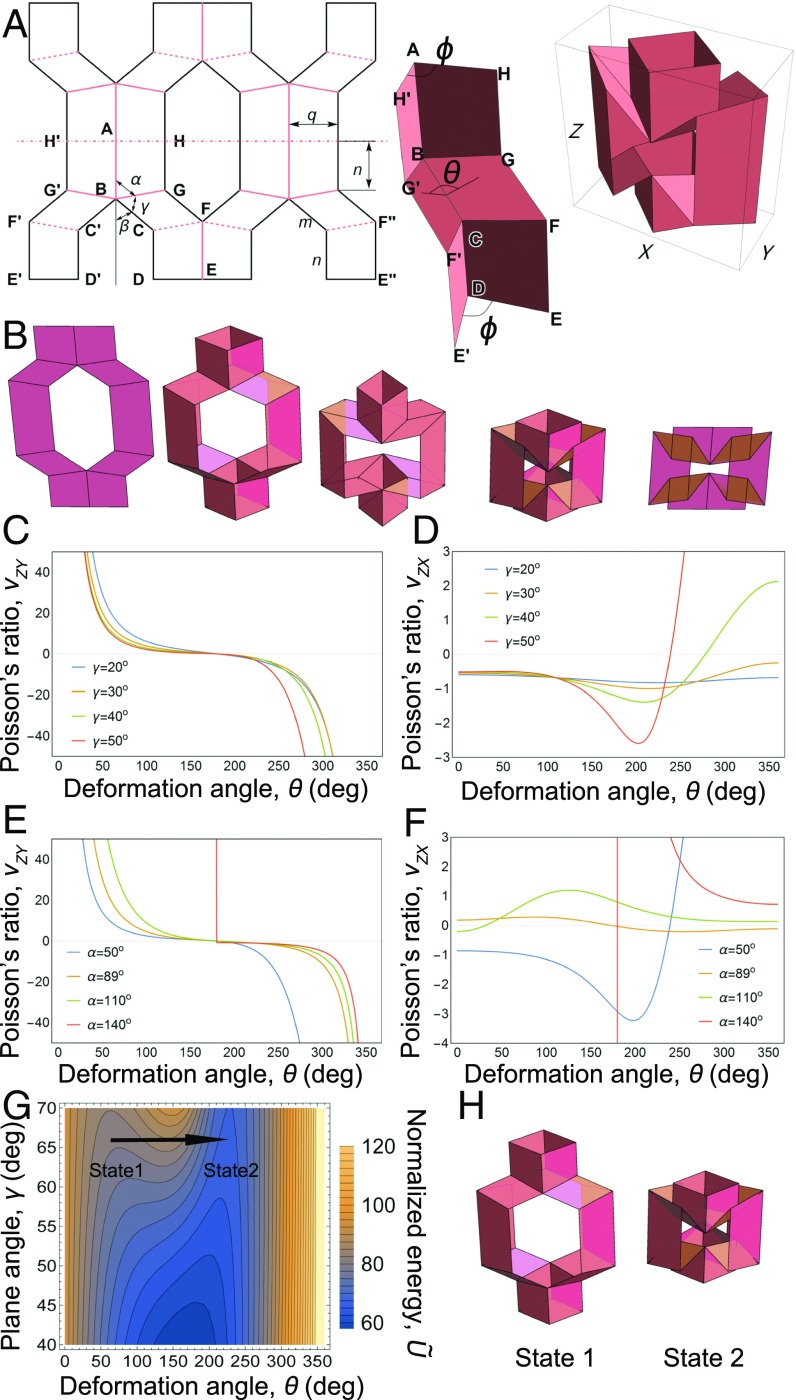Fig. 1.
Geometry-driven metamaterial properties of a kirigami lantern-like module. (A) The design pattern of one module (Left) involves cutting a thin sheet along the thick black lines, then folding along the mountain (dashed) and valley (solid) creases. Edges and are bonded to create crease-like hinges in each of the four symmetric quadrants. Similarly, is bonded to , along with the symmetric edges in the module’s upper half. The plane angle parameters and and lengths , , determine the 3D structure shown in the (Middle) and full (Right) unit module. The dihedral angle is chosen to quantify the module’s configuration. Parameters and are useful for the mathematical description of the geometry (Materials and Methods). (B) The module takes various forms determined by the configuration angle and . Poisson ratios (C) and (D) as functions of folding configuration for and and . Poisson ratios (E) and (F) as functions of folding configuration for and , and . Calculations in C–F use . (G) The normalized elastic energy as a function of and for parameter values , , and . Arrow indicates the module undergoes a bistable transition between two energetic minima during folding. (H) The module’s configuration for the two mechanically stable states in G. Reading left to right in B and H corresponds to compression along , whereas right to left corresponds to tension along .

